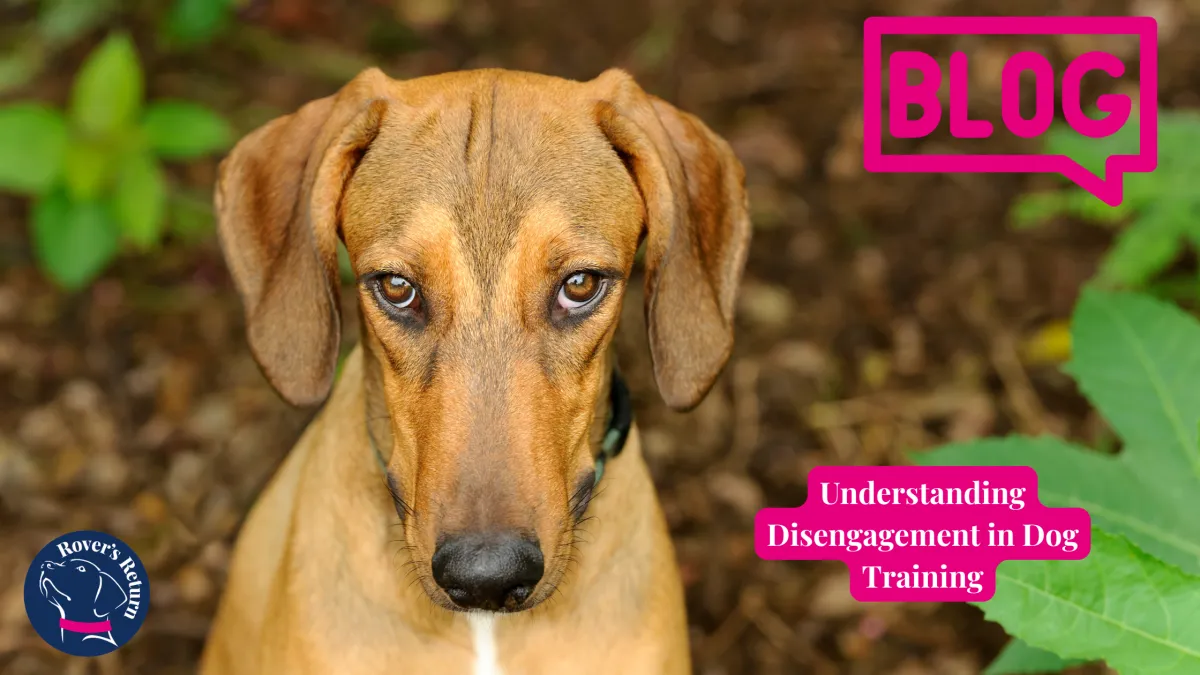
Understanding Disengagement in Dog Training
Understanding Disengagement in Dog Training

The Challenge:
Many dog owners face the same frustrating problem: their dog is easily distracted and seems to "tune out" in the presence of triggers like other dogs, people, or squirrels. This is a common sign of a lack of disengagement—the crucial skill that allows a dog to shift their focus from an external stimulus back to their owner.
When a dog is highly aroused—whether from excitement, fear, or frustration—they are "fully engaged" with the trigger. In this state, they cannot learn or listen to commands. This can lead to unwanted behaviours like barking, lunging, or even biting, which can be mistakenly seen by others as unprovoked.

The Solution: Building the Skill of Disengagement
True behavioural change comes from teaching your dog to disengage, to mentally and physically move away from a trigger. This isn't about suppressing their emotions; it's about giving them the tools to cope and make better choices.
The key to success is to:
Acknowledge and Reward Disengagement: Don't just react to unwanted behaviours. Actively watch for and reward the moments when your dog chooses to disengage, even if it's just a glance away from a distraction. This reinforces the desired behaviour and builds its value.
Create Value Away from the trigger: In a dog's mind, the external stimulus (the squirrel, the other dog) holds immense value. To compete with that, you must create even more value for disengaging and focusing on you. This can be done by:
The "Turn and Feed" Method: As your dog notices a trigger, turn away and feed them high-value treats. This teaches them that moving away from the trigger leads to something great.
Rewarding 'Check-ins': Reward your dog whenever they spontaneously look at you during a walk, showing that their focus is on you.
Practice at the Right Level: Dogs cannot learn when they are over-stressed or over-excited. Start training in a calm environment with minimal distractions. Gradually introduce less distracting triggers (e.g., a person walking by in the distance) before moving on to more challenging ones. Stay below their "reaction threshold."
Acknowledge Small Wins: Celebrate every small moment of success. A single moment of disengagement today is the building block for a lifetime of calm. Don't let a "bad day" overshadow the progress you've made.

By practicing disengagement in all different situations, you are teaching your dog to mentally disengage when in distracting environments, and to focus on the behaviour that gets them what they want. It’s a powerful foundation for managing bigger distractions in the real world. Condition the behaviour that you want to achieve by marking and rewarding when it happens. That is the magic of true disengagement.
Remember: The goal is to build your dog's ability to cope and make good choices, transforming their emotional responses from impulsive engagement to calm disengagement. This is the key to a happier, safer life for both of you.
If you want to learn more, contact Sam for a consultation call
